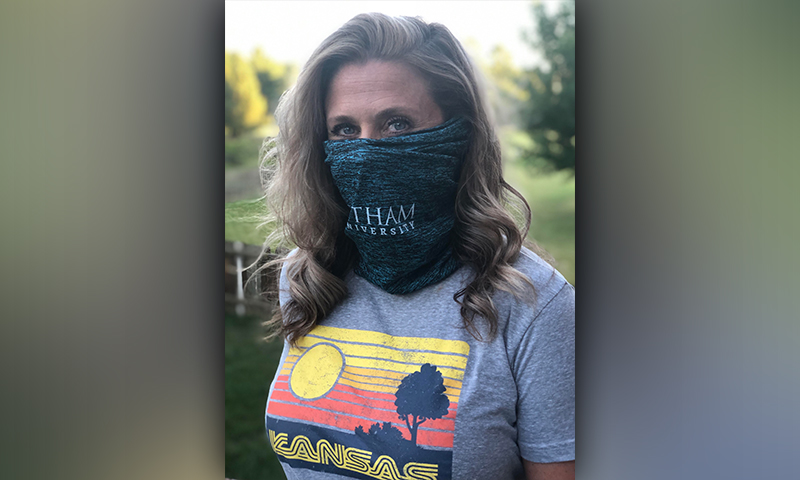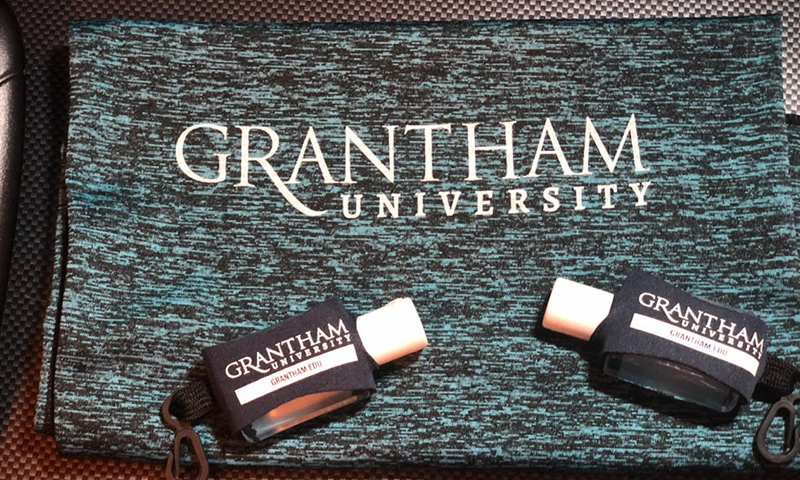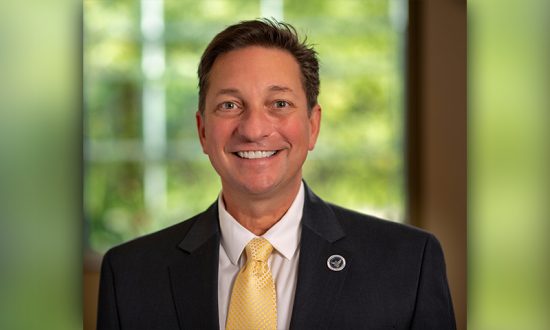Dr Anthony Petroy’s vast higher education experience includes more than a decade of online education leadership. An Air Force veteran and champion for the expansion of access to distance and online education, Dr Petroy previously served as the vice provost of global learning at Missouri University of Science and Technology. He has also held leadership roles for universities such as Robert Morris University, the Chicago School of Professional Psychology, and Argosy University. He holds a Doctor of Management in Organizational Leadership from the University of Phoenix, a Master of Science in Management from Troy State University, and a Bachelor of Science in Accounting from the Pennsylvania State University.
Grantham University is no stranger to disaster recovery. After surviving Hurricane Katrina, a Category 5 storm that devastated the gulf coast of the United States in 2005 and left 1,833 dead, it had to relocate its headquarters, effectively starting over. Now headquartered in the Kansas City, Missouri, metro, the lessons learned, and operations developed post-Katrina helped Grantham nimbly transition once again when the COVID-19 pandemic hit in March 2020.
By learning and implementing the strategies that proved successful for Grantham in the wake of Katrina and the pandemic, you too can ensure that your organization comes out of any disaster prepared and able to continue providing high-quality education.
1. Have a plan
You’ve probably heard Benjamin Franklin’s famous words, “Failing to plan is planning to fail.” This timeless adage is more than just a catchy saying, it really is the most important lesson Grantham learned: have a business continuity plan or emergency response plan in place. Grantham’s emergency response plan identified key decision-makers needed to participate in any emergency response. These are the players that will be responsible for maintaining contact with stakeholders and the media, developing and implementing new operations and determining the allocation of resources in the event of a disaster. For Grantham, the individuals are the president and department heads from human resources, student advising, academics, finance and communications.
“It was nice because we didn’t have to scramble when the pandemic affected our operations,” explained Tracy Gallery, Vice President of Human Resources. “We already had a business continuity plan created after the hurricane with policies that could be put into effect as soon as we needed. We were able to continue operations without missing a beat.”
To start developing an emergency response plan for your institution, consider the following:
- What threats (internal and external) do you anticipate? What threats could trigger the execution of the plan?
- What can you proactively do to mitigate these threats?
- In the event of one of these threats, who are your key decision-makers? Who is responsible for what?
- What will success in the wake of a disaster look like for your organization?
2. Be Prepared
After Katrina wreaked havoc on Grantham’s headquarters, destroying four out of five buildings and everything inside them, the university lost nearly everything. Computer servers were moved to an out-of-state bunker, the headquarters office was relocated to Lenexa, Kansas, and every employee was outfitted with a laptop for working remotely. To this day, all Grantham employees are issued laptops for their workstations to ensure mobility and flexibility should the need to work remotely arise.
Since then, the business continuity team has organized practices that allow the entire Grantham team to operate from any environment, using the occasional snow day as practice runs. As the pandemic was unfolding, the focus of the committee was to assess whether to institute a remote work state. Based on an internal desire to be proactive rather than reactive, the team decided to activate remote work on Friday, March 13. The goal was to operate remotely before any exposure at the office that would put employees in harm’s way and create disruption to employees, as well as students. Grantham proactively put this plan in place ten days before the local government putting a Stay-at-Home order in place.

Because of the advanced preparation, the announcement was made at 3 p.m. on March 12, and as of the morning of March 13, the entire staff had shifted seamlessly to remote status. Essential employees were designated and tasked with handling duties associated with inbound and outbound mail appropriately. Any supplemental equipment needs for monitors, scanners, printers and telephones were assessed and fulfilled, either from equipment at the office or the supply of extra kept on hand.
In addition to physical equipment, Grantham also had a remote employee communication plan in place. Before the pandemic, Grantham had already installed and trained employees on Zoom, Google Chat and Trello, so employees were able to communicate via video conferencing and instant messaging with ease.
When the State of Kansas implemented their Stay-at-Home order, the Grantham employee base was not only unaffected, they had already settled into their new normal. Thanks to Grantham’s equipment and software plan, the university transitioned to remote working with zero employee downtime. Students and faculty were already entirely online, one of the many benefits of being a 100 per cent online learning establishment.
3. Communicate
Communication with stakeholders in the wake of a disaster is paramount. In the aftermath of Hurricane Katrina, employees had to be accounted for and all operational changes and updates on damage and repairs needed to be disseminated in a timely manner. A phone tree was formed for managers to confirm employees were safe and had a place to live. Daily communication on the status of the storm and repairs were emailed to all employees, staff and students, and a voicemail message with information and guidance was initiated on the main phone number.
When COVID-19 hit and work-from-home was initiated, employees needed to know what steps the university was taking to ensure continuous operation while adhering to social distancing guidelines and any new protocols due to the virus.
At the beginning of the pandemic, Grantham sent communications to all employees multiple times per week to answer any questions that had arisen, as well as reassure the staff. Besides, an all-employee Town Hall was conducted via Zoom.
Surveys were sent to employees to gather the information that would guide decision making. Leadership wanted to know how employees were being impacted, and the surveys provided insights into what their needs and expectations were.
4. Support your employees, students and faculty
After the hurricane devastated Grantham’s home office, Grantham’s leadership did everything in its power to help employees get back on their feet.
“Our leaders went out of the way to make sure every person at Grantham had the ability to relocate,” said George Colon, director of university outreach and one of the few employees who witnessed the devastation first hand. “The university paid for moving costs, six months of housing and utilities and for employees to go back to Louisiana twice a month to retrieve belongings and repair homes.”
The university took the same approach to address the initial and trickle-down impacts of COVID-19. Increased workload demands for students and faculty working in the healthcare sector, and childcare, financial and health concerns for all other students and faculty emerged as major issues the organization needed to address.

Deans and managers were empowered with the flexibility to use a variety of tools to help students or employees. Cheryl Rules, dean of nursing and allied health, sent an email to nursing school students and faculty in early March, understanding that many had full-time jobs in addition to courses. She advised faculty and students that the healthcare sector, hospitals, in particular, would be hard hit by the pandemic and that Grantham offered support in any way possible.
“I told faculty and students to not worry about their classes or teaching load,” explained Rules. “We secured volunteer faculty to teach courses where needed, and I advised (faculty) that if job demands increased, to do what they need to do, stay safe and come back when they can. All first responders were told they would not be charged to retake classes.”
Experience both in serving military members that are periodically deployed, as well as a result of Hurricane Katrina, helped the university develop policies that enabled students in these extraordinary circumstances. These policies allow students to pause coursework and resume when ready without failing the class — providing the flexibility in scheduling and financial management that some needed. The university also kept track of any student who contacted the university and indicated COVID-related financial difficulties. About 500 students were identified as needing additional time to make payments or financial assistance.
The CARES Act enabled the university to offer financial assistance to students who qualified. For students who didn’t qualify for that type of relief, the university was flexible with payment options, even waiving tuition balances for students who had to pause their classes but wished to return when ready.
After receiving the results of employee surveys, adjustments to work schedules were granted as feasible to those who needed them. Also, mental health and employee assistance programs were promoted for access by those employees who needed them.
5. Support your community
Because Grantham believes in supporting its community, not just its own family, the business continuity team wanted to help at the community level, as well. It created the Student Community Grant, an offshoot of its Community Grant program that has helped dozens of charitable organizations with more than $200,000 in donations.
The Student Community Grant pledged $5,000 to its students who were helping in their communities during the pandemic. More than 100 applications were received, and five winners were chosen from across the country to be awarded $1,000 each to fund their work.
Grantham University understands that educational institutions have a lot of moving pieces, from students to faculty, to staff, and that disasters like the COVID-19 pandemic can throw a massive wrench in the mix. After reinventing itself post-Hurricane Katrina, Grantham has learned some lessons and is confident that your organization can come back from this pandemic stronger by following these tips.




